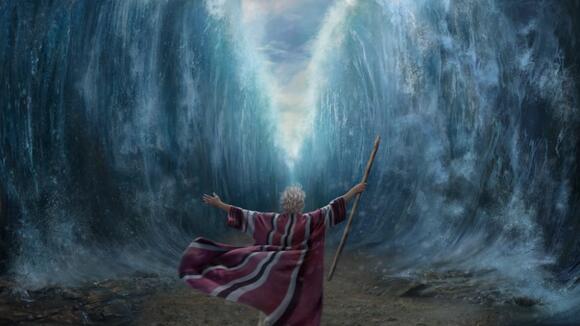Many people have been astounded by the biblical story and miracle of Moses parting the Red Sea. It is regarded as one of the most remarkable miracles ever recorded in the Bible. Moses led the Israelites through the Promised Land and out of Egypt. The army of the Egyptian monarch pursued them. At the Red Sea, Moses stretched out and forced the waters to divide, ensuring the safety of the Israelites.
The Egyptians chased them, but when Moses once again complied with God’s command to extend his hand, the army was engulfed in water. This occurrence is described in the Old Testament.
Being the pinnacle of God’s rescue of His people from Egyptian slavery, the dividing of the Red Sea is noteworthy. The Israelites’ exodus from Egypt and the splitting of the Red Sea are among the greatest acts of redemption recorded in the Old Testament, and they are commonly cited as examples of God’s redeeming power. The events of the exodus, including the splitting and crossing of the Red Sea, are recorded in the Psalms, which Israel commemorates in their devotion.
God foretold to Abraham that his descendants would be sold into slavery for 400 years in a faraway land, but God also promised to free them:
“But I will bring judgment on the nation that they serve, and afterward they shall come out with great possessions” (Genesis 15:14).
Researchers have been trying to figure out how the Israelites managed to escape the charging horses of the Pharaoh for years. Fifty years ago, Cecil B. De Mille created a cinematic rendition of the Ten Commandments using his own special effects skills.
Researchers from the National Centre for Atmospheric Research (NCAR) and the University of Colorado in Boulder believe that various combinations of wind and waves may have produced the dry land bridge referenced in Exodus (CU). They now assert that they recreated these potential wind and wave combinations using computer modeling.
On their climax, the departure of the Israelites is performed out in the Nile delta.
The researchers hypothesized that a strong east wind blowing overnight may have held back the waters on a coastal lagoon in northern Egypt, allowing the Israelites to cross the exposed mud flatsbefore the waves surged back in and swallowed the Pharaoh’s cavalry.
He finally concluded that consistent winds of 63 mph blowing from the east over a lake that had been digitally recreated along the Mediterranean near the modern city of Port Said might have swept the waters back to the western shores, exposing wide mud flats and forming a land bridge that would remain high and dry for four hours.
